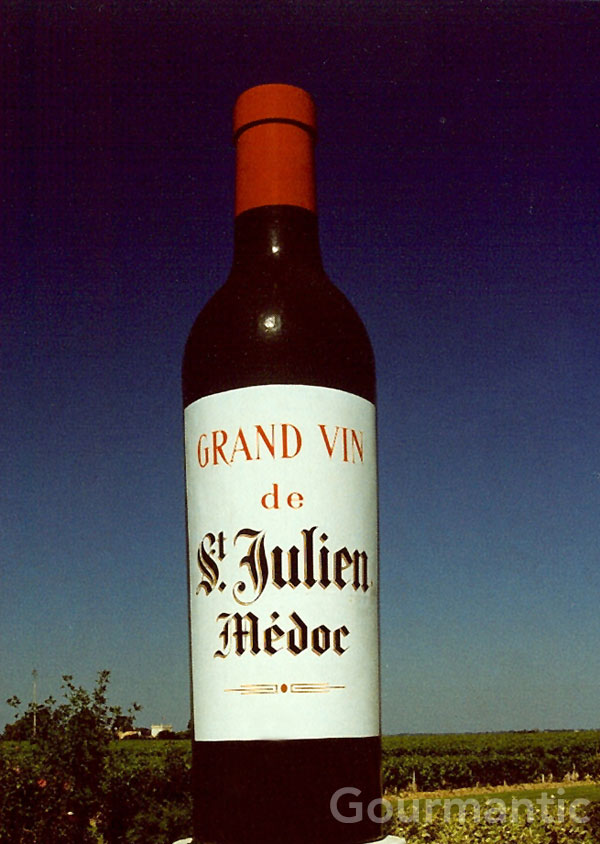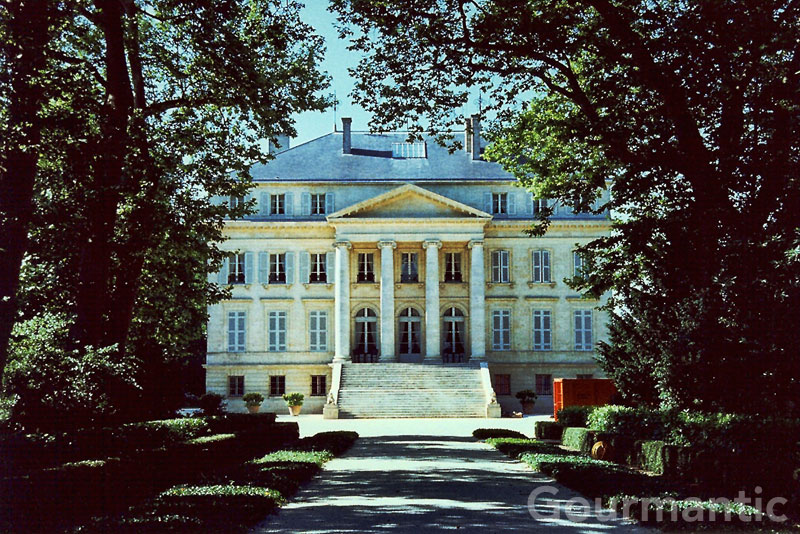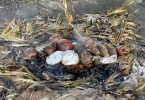Missing our visite to Janneau Armagnac in Condom gave us more impetus to reach our next destination on time. As we approach Bordeaux, I remembered the warning given to me by a friend who drove around France, regarding the massive and confusing roundabouts. I caution Mr G to avoid more disappointments.
Roundabouts or rond-points, exist in abundance in France. On the approach, a large sign indicates the directions to be taken and their destinations. Sometimes, names of towns that do not feature on maps are posted. If we’re uncertain of our direction, we usually circle around once, twice, sometimes three times. After a process of elimination we make a choice. There is always a zone industrielle or centre ville somewhere. We drive off in our chosen direction. A few kilometres later, one of us realises we are approaching a town that should not be on our way. So we turn around, negotiating more roundabouts, in order to take another exit. Who said driving is no fun?

Château St Julien
We reach Bordeaux and its colossal roundabout. There is no sign to point us in the direction of Médoc. We choose an exit that takes us among major embouteillages, bumper to bumper traffic to the city centre and find ourselves inadvertently in front of our Minotel. We stop and ask for directions to Pauillac. We have three appointments to visit Château Mouton Rothschild, Château Lafite Rothschild and Château Margaux, each an hour apart.
We are already forty minutes late for the first one and when I telephone their office from the Minotel, they regretfully could not see us at a later time. Feeling sorry for us, the receptionist gives us a local map with specific directions on the fastest route to reach Médoc.
We are back en route, past city traffic and onto the D2 north to Médoc. Two zones divide Médoc, the Bas-Médoc and the larger more prestigious Haut-Médoc. We pass the little town of Margaux and continue further north to Pauillac. Once in the town, we drive around trying to locate Château Lafite-Rothschild. There is only one directional sign to the Château and no further clues. We must have toured the region twice before Mr G decides to stop at an unidentified Château. He is certain it is the one.
The closed doors are displaying a telephone number advising visitors to contact the Paris office in writing for an appointment. It corresponds to that on our confirmation letter. We check in half an hour late at the office. Apologetically, I explain to madame that we had trouble locating the premises so she says that she’ll speak to F. In the reception area, a middle-aged American couple is waiting, presumably for their visit. Monsieur scans our letter and I explain to him in French that we have been circling the area for half an hour trying to find the Château.
“Mais non!” he exclaims.
“Ce n’est pas marqué. C’est mon mari qui a eu l’idée que c’était ici.” I tell him that it isn’t sign-posted and in the end, it was my husband who was certain this is the place.
“Ah! Les maris, c’est pour ca!” he says with a smile. So that’s what husbands are for!
He informs us that the next appointment is half an hour early and also in English so he would be happy to combine the two.

The cellars of Château Lafite-Rothschild
From the reception are, we cross to a large hall where coopers make their casks and the process is explained. We enter another large room where the pressing of grapes occurs and huge stainless steel vats are in operation. The next cave contains parallel rows of barrels, some laid to rest, others being moved along wooden tracks. Two young children are playing among these, which did not please Monsieur from a safety point of view.

The tour concludes in a vast circular cave with round pillars that has been dug out from the ground and vines were replanted above it to provide a cool storage area for the ageing barrels. A mechanism, designed solely for Château Lafite, regulating the temperature and the humidity, opening vents to allow air in if required, is a new acquisition of which they are proud. Directly beneath it on the floor, lay the coat of arms of the company. Monsieur explains that it was among these surrounds that a recent dinner was held for one of the descendants of the
family and a one hundred year old bottle was opened. For us, we have to contend with tasting a glass of a much considerable younger vintage before exiting via along wide sloped driveway onto the vineyards.

The couple from Alabama have taken control of the visit by asking inept questions leaving us to tag along. We did not mind as it is their visit we are imposing on. They have visited Mouton-Rothschild, a property belonging to Baron Nathaniel Rothschild since 1853 and likened the visit to a Disneyland tour by hosts trained to answer only specific questions. The more basic, rustic visit of Château Lafite gave them more joy, particularly since they had Monsieur’s undivided attention!
Later, we learn that Lafite and Mouton are related and that Lafite is the French branch of the Rothschild family, owned by another branch of Baron Philippe de Rothschild. We can’t help but feel privileged to experience this visit.
Having truly missed our appointment at Château Margaux, we drive leisurely in the Médoc region, stopping and photographing anything we like. Splendid Châteaux and vineyards abound in this part of France. An afternoon does not do it justice.
Some of the Châteaux exude romantic beauty while others look like stately homes. The information centre is our brief stop where we refresh ourselves with a drink before giving our Renault 19 its share of sans plomb 98. By that stage of our journey, names such as Agip, Antar and E. Leclerc are as popular as Mobil and Shell.

Château Margaux façade
It is late afternoon in the Médoc. We stop in front of Château Margaux for a look at the classical Empire façade dating to 1802 before taking the D2 back to Bordeaux. The villages we pass are bathed in a warm orange glow from the setting sun.
Ah, the exuberance of driving on French roads. With French music playing, the warmth of the dry heat, the sensation of belonging to a land, the feeling of being alive as well as flying at speeds never before attained, the spirit feels alive while the mind feasts on a vista of wheat fields, sunflowers, maize, haystacks and vineyards.
… continues tomorrow
‘Le Tour de France Gourmantic’ series is the story of a young couple from Australia who took to the French roads on a whirlwind Tour of France back when the internet wasn’t at everyone’s fingertips, phones were still attached to sockets, GPS was an unfamiliar acronym, digital cameras were a pipe dream and the Euro hadn’t replaced French Francs. With just one fold-out map of France and boundless enthusiasm, they took their Renault 19 and went on a cultural and culinary discovery.






[…] from Toulouse via Condom then all the way to one of the most prestigious wine region in France to visit Château Lafite Rothschild – all in one day. This is turning out to be quite a Tour de […]